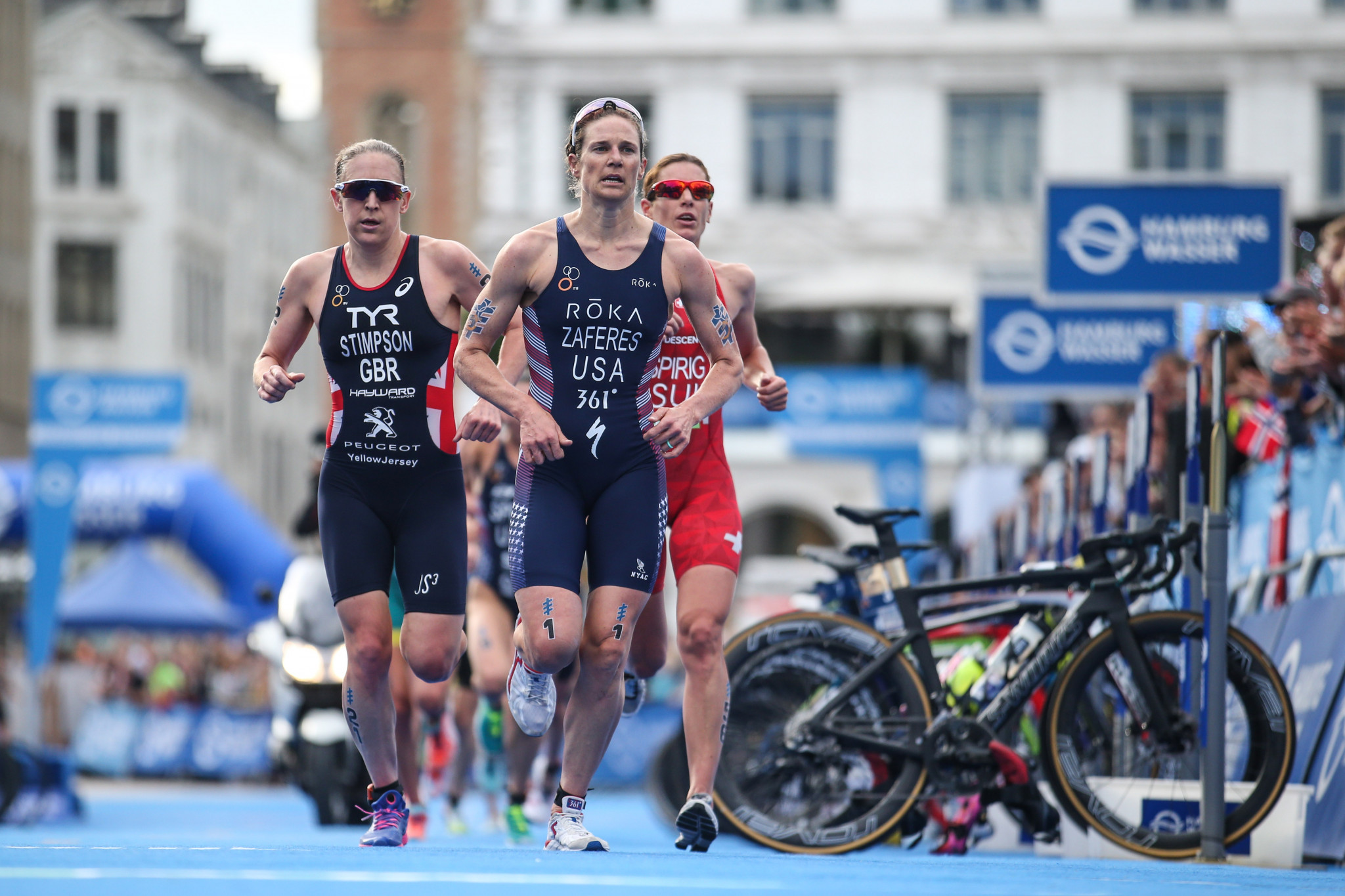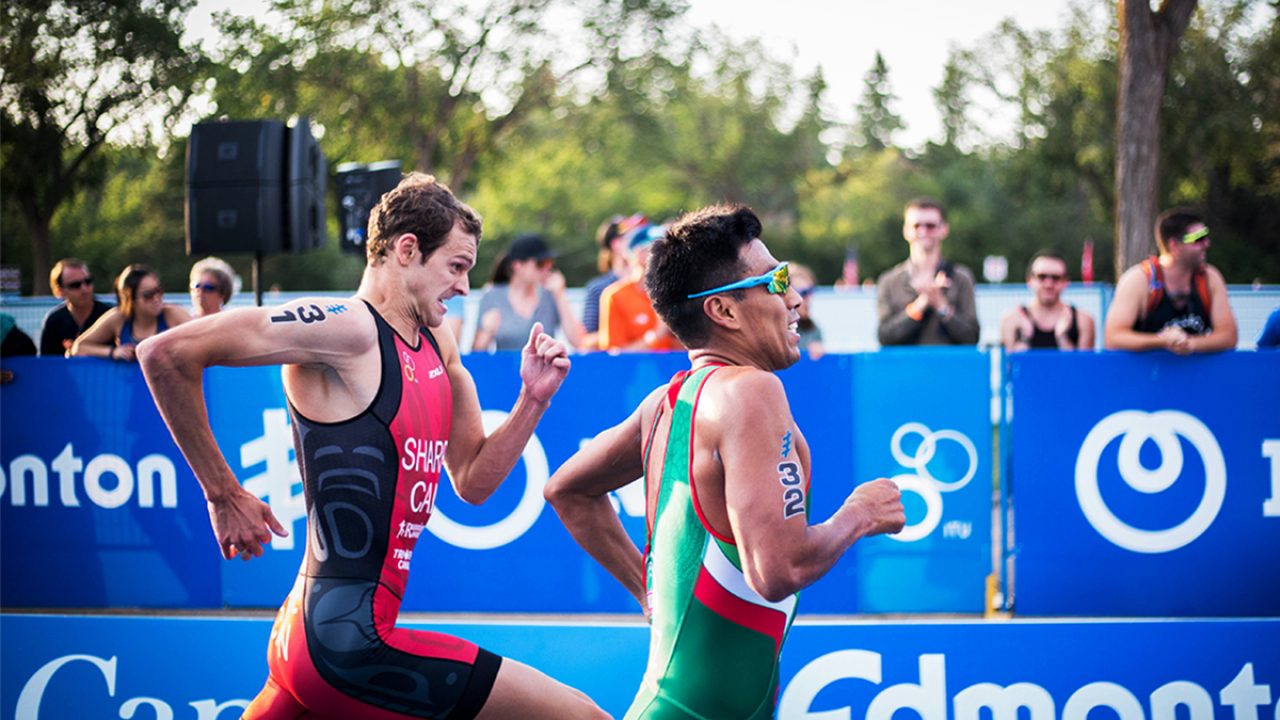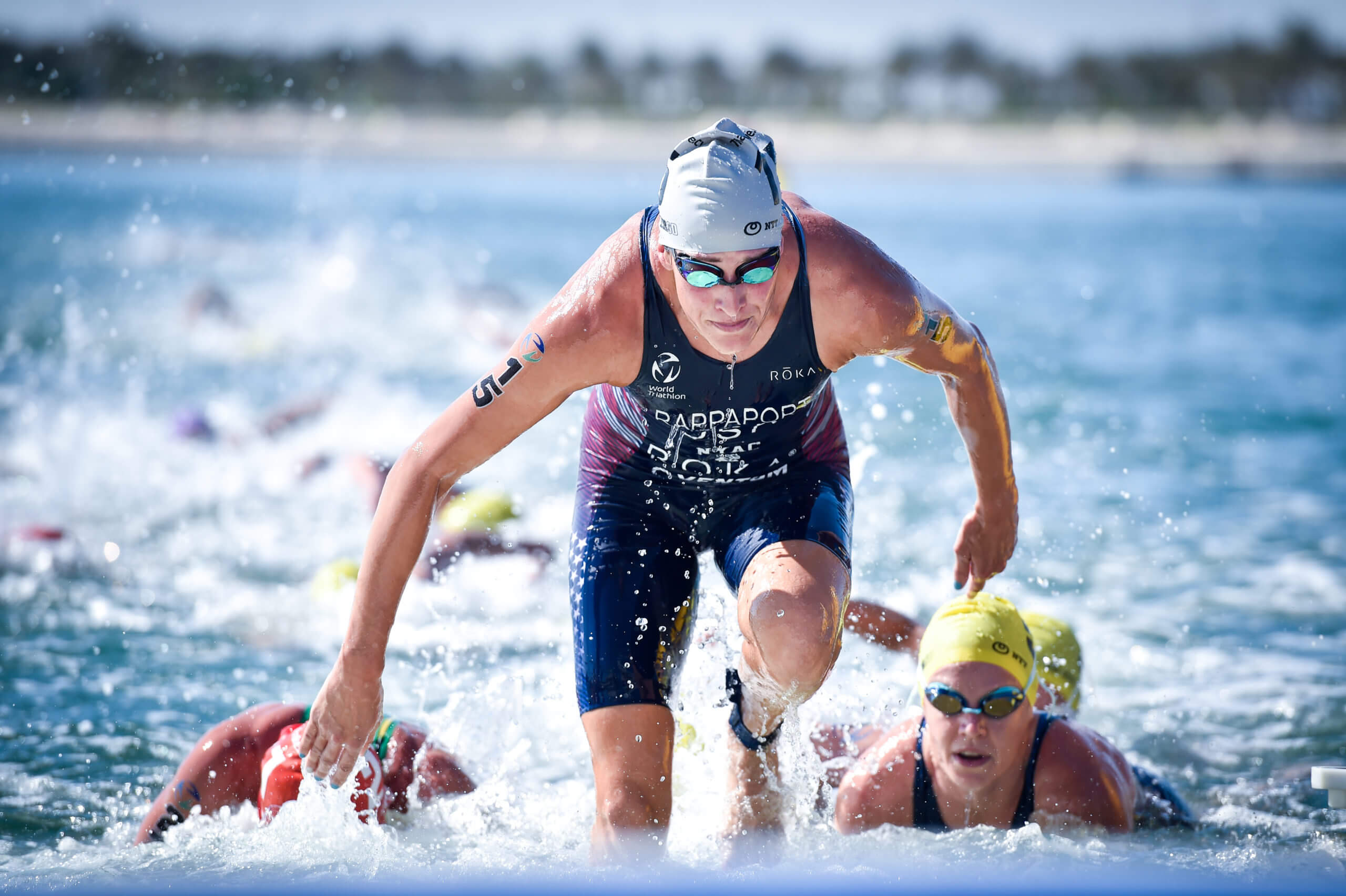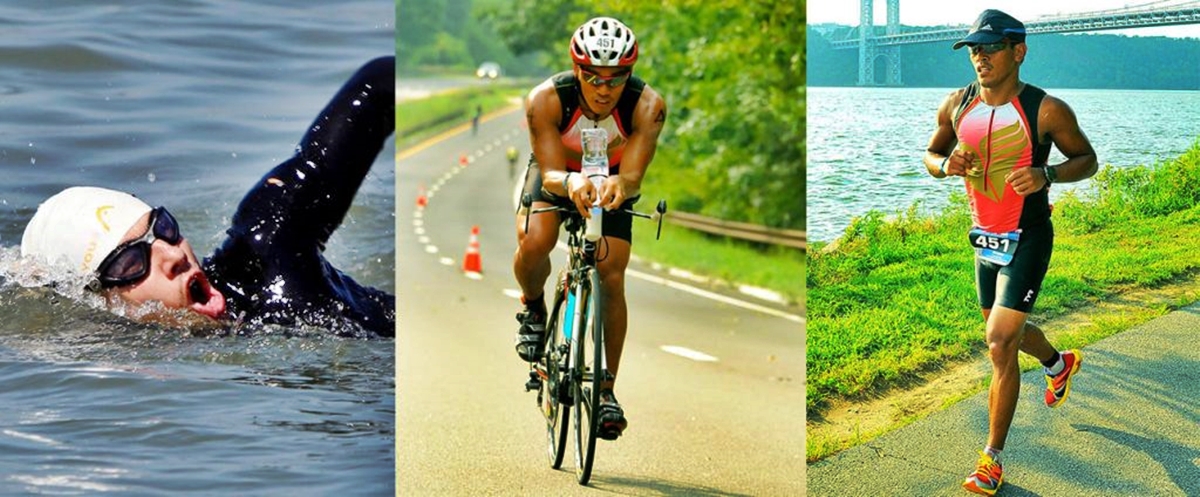Home>Misc>Featured>When And Where Was The Triathlon Introduced As An Olympic Sport?


Featured
When And Where Was The Triathlon Introduced As An Olympic Sport?
Modified: January 22, 2024
Learn about the history of the Triathlon as an Olympic sport and discover when and where it was introduced. Read this featured article now!
Introduction
The triathlon is an exhilarating and demanding sport that combines three disciplines: swimming, cycling, and running. Athletes push their limits as they swim through open waters, cycle across challenging terrains, and sprint towards the finish line on foot. But have you ever wondered when and where the triathlon was introduced as an Olympic sport?
The origins of the triathlon can be traced back to the early 1900s, when various endurance and multi-sport events were gaining popularity. However, it wasn’t until later that the triathlon as we know it today started to take shape and earn recognition as a competitive sport.
Before we delve into the history of the triathlon in the Olympics, let’s explore how this extraordinary sport came into existence.
The concept of combining different sports into a single event is not a new one. In ancient Greece, for example, the Olympic Games featured events that combined running, jumping, and throwing. Similarly, modern pentathlon, which made its debut in the 1912 Olympics, included five distinct sports: swimming, fencing, horse riding, running, and shooting.
This idea of multi-discipline events continued to evolve, and in the mid-20th century, the sport of duathlon emerged, consisting of running and cycling. The addition of swimming to create the triathlon happened later, thanks to the ingenuity and creativity of a few pioneering sports enthusiasts.
As recreational sports enthusiasts began to explore the possibilities of combining swimming, cycling, and running, the first recorded triathlon event took place in France in the early 1970s. This event was organized by the San Diego Track Club, inspired by the training regimen of the U.S. Marines stationed at Camp Pendleton in California, who undertook such challenges to test their physical endurance.
With the growing popularity of the triathlon, athletes from around the world started participating in various events and competitions. The International Triathlon Union (ITU), founded in 1989, emerged as the international governing body for the sport, working to establish consistent rules and standards for triathlon competitions.
Now, let’s explore the journey of the triathlon as it made its way to becoming an Olympic sport. From its humble beginnings as a grassroots movement to its official inclusion in the greatest sporting event in the world, the triathlon has truly come a long way.
Origins of the Triathlon
The origins of the triathlon can be traced back to the early 1900s when multi-sport events were gaining popularity. However, it wasn’t until later that the triathlon as we know it today started to take shape and earn recognition as a competitive sport.
The concept of combining different sports into a single event is not a new one. In ancient Greece, for example, the Olympic Games featured events that combined running, jumping, and throwing. Similarly, modern pentathlon, which made its debut in the 1912 Olympics, included five distinct sports: swimming, fencing, horse riding, running, and shooting.
The idea of challenging oneself physically and mentally through multiple sports caught on, and in the mid-20th century, the sport of duathlon emerged. Duathlon, which combines running and cycling, paved the way for the development of the triathlon.
Adding swimming to the mix to create the triathlon didn’t happen overnight. It was the result of the imagination and ingenuity of a few pioneering sports enthusiasts. The first recorded triathlon event took place in France in the early 1970s. Organized by the San Diego Track Club, the event was inspired by the training regimen of the U.S. Marines stationed at Camp Pendleton in California, who undertook such challenges to test their physical endurance.
As athletes began to embrace the triathlon, the sport quickly gained popularity. The first official triathlon in the United States took place in Mission Bay, San Diego, in 1974. The event featured a 6-mile run, a 5-mile bike ride, and a 500-yard swim, attracting a small group of enthusiastic participants.
From there, triathlon events started popping up around the world, captivating the attention of athletes looking for a new and exciting challenge. The International Triathlon Union (ITU) was founded in 1989, providing a platform for the sport to grow and establish consistent rules and standards.
Today, the triathlon has evolved into a global phenomenon, with professional athletes competing at the highest level in Olympic Games, World Championships, and Ironman competitions. The sport attracts participants of all ages and abilities, from weekend warriors to elite athletes.
With a rich history that spans decades, the triathlon has come a long way since its humble beginnings. Its combination of swimming, cycling, and running continues to captivate the hearts and minds of athletes around the world, pushing them to their limits and showcasing the true spirit of endurance and athleticism.
Early Development of the Triathlon
After the first recorded triathlon event in the early 1970s, the sport started to gain momentum as athletes embraced the unique challenge of combining swimming, cycling, and running. The early development of the triathlon can be attributed to the dedication and passion of sports enthusiasts who pushed the boundaries of endurance and created opportunities for others to participate in this exciting new sport.
Triathlon events began to proliferate worldwide, and athletes from different backgrounds started to compete in these multi-discipline races. As the sport gained popularity, governing bodies such as the International Triathlon Union (ITU) emerged to provide structure and establish rules and standards for competitions.
The 1980s saw significant developments in the early maturation of the triathlon. The first Ironman World Championship took place in Kailua-Kona, Hawaii, in 1981. The race, which included a 2.4-mile swim, a 112-mile bike ride, and a marathon 26.2-mile run, showcased the true essence of endurance and attracted top athletes from around the world. The Ironman format became a hallmark of the sport and inspired countless individuals to push their limits.
In 1989, the ITU was founded as the international governing body for triathlon. With its establishment, the ITU aimed to unify the sport and organize events on a global scale. The inaugural ITU World Championships were held in Avignon, France, in the same year, with a focus on standardizing race distances and rules. The ITU continued to play a crucial role in the development of the triathlon, leading to its eventual inclusion in the Olympic Games.
During this period, triathlon races started to diversify in terms of distance and format. Sprint-distance triathlons, with shorter distances for each leg of the race, gained popularity alongside the classic Olympic-distance triathlon. Long-distance races, known as half-Ironman or Ironman 70.3, also gained a dedicated following, appealing to athletes looking for a greater endurance challenge.
As the sport expanded, so did the technical advancements associated with triathlon equipment. Improved wetsuits, aerodynamic bicycles, and specialized running shoes became essential tools for triathletes striving for performance gains. These advancements further propelled the early development of the sport, enhancing the experience for both professional and amateur participants.
Throughout the 1990s and early 2000s, the triathlon continued to grow in popularity and gained recognition as a competitive and prestigious sport. National and international triathlon federations were established in various countries, paving the way for national team competitions and fostering the development of grassroots triathlon clubs.
The early development of the triathlon laid the foundation for the sport’s eventual inclusion in the Olympic Games. The rapid growth, enthusiasm, and global appeal of triathlon set the stage for the next chapter in its history, as the world’s top athletes eagerly awaited the opportunity to compete on the Olympic stage.
Inclusion of the Triathlon in the Olympics
The inclusion of the triathlon in the Olympic Games is a testament to the growing popularity and global recognition of the sport. Athletes, fans, and governing bodies alike eagerly anticipated the moment when triathlon would be officially added to the prestigious list of Olympic disciplines.
Efforts to include the triathlon in the Olympics began in the late 1980s and early 1990s. The International Triathlon Union (ITU) played a pivotal role in advocating for the sport’s inclusion and worked closely with the International Olympic Committee (IOC) to make the dream a reality.
It was crucial for the triathlon to meet certain criteria before being considered for inclusion in the Olympic Games. The ITU focused on establishing standardized race distances, rules, and guidelines that aligned with the Olympic standards. This consistency ensured fair competition and enabled athletes from different regions to compete on an equal footing.
Triathlon’s unique combination of swimming, cycling, and running appealed to the Olympic governing bodies as it added diversity to the roster of existing sports. The sport’s physical demands, blend of individual and team elements, and ability to showcase endurance and athleticism made it an ideal addition to the Olympic program.
The inclusion of the triathlon in the Olympics was also driven by the increasing global participation and viewership of the sport. Triathlon events drew passionate crowds and generated considerable media coverage, capturing the attention of Olympic officials who recognized its potential as a compelling spectator sport.
After years of lobbying and careful planning, the IOC announced in 1994 that the triathlon would be introduced as an Olympic sport. This decision marked a significant milestone for the sport and was met with excitement and anticipation from triathletes around the world.
The first Olympic triathlon event was held at the 2000 Summer Olympics in Sydney, Australia. The race format followed the standard Olympic-distance triathlon, consisting of a 1.5-kilometer swim, a 40-kilometer bike ride, and a 10-kilometer run. Elite athletes representing various nations competed for gold, showcasing their skills and endurance on the world stage.
The inclusion of the triathlon in the Olympics not only elevated the sport’s standing but also had a profound impact on its growth and accessibility. The Olympic exposure brought triathlon to the attention of a wider audience, inspiring new generations of athletes to take up the sport and contributing to its continued expansion at all levels.
Since its inclusion, the triathlon has become a highly anticipated event at each subsequent Olympic Games. Athletes from around the world train tirelessly for the opportunity to represent their countries and compete for Olympic glory in this ultimate test of strength, speed, and endurance.
As the sport continues to evolve and captivate audiences, the inclusion of the triathlon in the Olympics remains a pivotal moment in its history, solidifying its status as a prestigious and celebrated discipline within the international sporting community.
Debut of the Triathlon as an Olympic Sport
The debut of the triathlon as an Olympic sport was a historic moment for both the sport itself and the athletes who had dedicated themselves to its pursuit. The inclusion of the triathlon in the Olympic Games brought it to the attention of a global audience and solidified its place as a highly respected and prestigious discipline.
The first Olympic triathlon took place at the 2000 Summer Olympics in Sydney, Australia. The course was set against the stunning backdrop of Sydney Harbour, capturing the attention of millions of viewers around the world.
Twenty-eight countries were represented by elite triathletes in both the men’s and women’s events. The race format followed the standard Olympic-distance triathlon, with a 1.5-kilometer swim, a 40-kilometer bike ride, and a 10-kilometer run.
The swim leg took place in the waters of Farm Cove, near the iconic Sydney Opera House. Athletes battled both each other and the choppy waves as they navigated the triangular course. Exiting the water, they transitioned to the bike leg, which took them through the scenic streets of Sydney, including a challenging climb up Observatory Hill.
Next came the run leg, which traversed around the Royal Botanic Garden and finished at the picturesque Sydney Opera House. The demanding course tested athletes’ endurance and showcased their determination as they pushed themselves to the limit.
The Olympic triathlon debut drew a tremendous amount of attention and excitement. Spectators lined the course, cheering on the athletes and immersing themselves in the exhilarating atmosphere. The intensity of competition was palpable as the world’s best triathletes vied for Olympic medals.
In the women’s event, Brigitte McMahon of Switzerland claimed the first-ever Olympic gold medal in triathlon with a time of 2 hours, 00 minutes, and 40 seconds. She surged ahead during the final run leg, leaving her competitors behind and etching her name in triathlon history.
In the men’s event, Simon Whitfield of Canada etched his name in the annals of Olympic triathlon by sprinting to victory in a thrilling finish. His well-timed and relentless surge in the final moments propelled him across the finish line, securing the gold medal and forever cementing his legacy in the sport.
The debut of the triathlon as an Olympic sport brought widespread recognition and respect to the discipline. It showcased the endurance, strength, and determination of the athletes who had dedicated themselves to mastering three distinct sports and excelling in the combination of all three.
Since its first appearance in the Olympics, the triathlon event has captured the imagination of participants and spectators alike. Each subsequent Olympic Games features highly anticipated triathlon races, with athletes from around the world chasing their dreams of Olympic glory.
By earning a place on the Olympic program, the triathlon has gained significant exposure and has seen a surge in participation globally. It continues to inspire and attract individuals from all walks of life, encouraging them to embrace the challenge of pursuing multisport excellence.
The debut of the triathlon as an Olympic sport marked a watershed moment in its history. It elevated the sport to new heights, solidifying its place among the most prestigious and exciting events in the sporting world.
Conclusion
The triathlon’s journey from its origins as a grassroots movement to its inclusion as an Olympic sport is a testament to the dedication, passion, and perseverance of athletes, organizers, and governing bodies. This unique and exhilarating discipline, which combines swimming, cycling, and running, has captivated the hearts and minds of individuals around the world.
The triathlon’s origins can be traced back to the early 1900s, with various multi-sport events and the emergence of duathlon. However, it wasn’t until the 1970s that the triathlon in its current form began to take shape and gain recognition. Since then, the sport has evolved, attracting participants of all ages and abilities who are eager to challenge themselves physically and mentally.
The early development of the triathlon saw the establishment of governing bodies like the International Triathlon Union (ITU) and the organization of standardized competitions around the world. These efforts set the stage for the triathlon’s inclusion in the Olympic Games, a momentous achievement that showcased the sport to a global audience.
Since its debut as an Olympic sport at the 2000 Summer Olympics in Sydney, the triathlon has continued to captivate audiences with its thrilling races and remarkable displays of athleticism. The triathlon has become a staple in subsequent Olympic Games, with elite athletes pushing themselves to the limit in their quest for Olympic glory.
As the triathlon continues to evolve and grow, it remains a sport that embodies determination, endurance, and the relentless pursuit of excellence. It continues to inspire individuals from all walks of life to embrace the challenge of participating in multi-sport events and pushing their own boundaries.
The inclusion of the triathlon in the Olympic Games has not only elevated the sport’s standing but also expanded its reach. The exposure on the Olympic stage has attracted new participants and fans, fostering the growth of the sport at all levels.
In conclusion, the triathlon’s journey from its inception to becoming an Olympic sport is a testament to the human spirit, pushing beyond limits and embracing new challenges. With its captivating combination of swimming, cycling, and running, the triathlon continues to empower athletes, inspire spectators, and leave an indelible mark on the world of sport.








